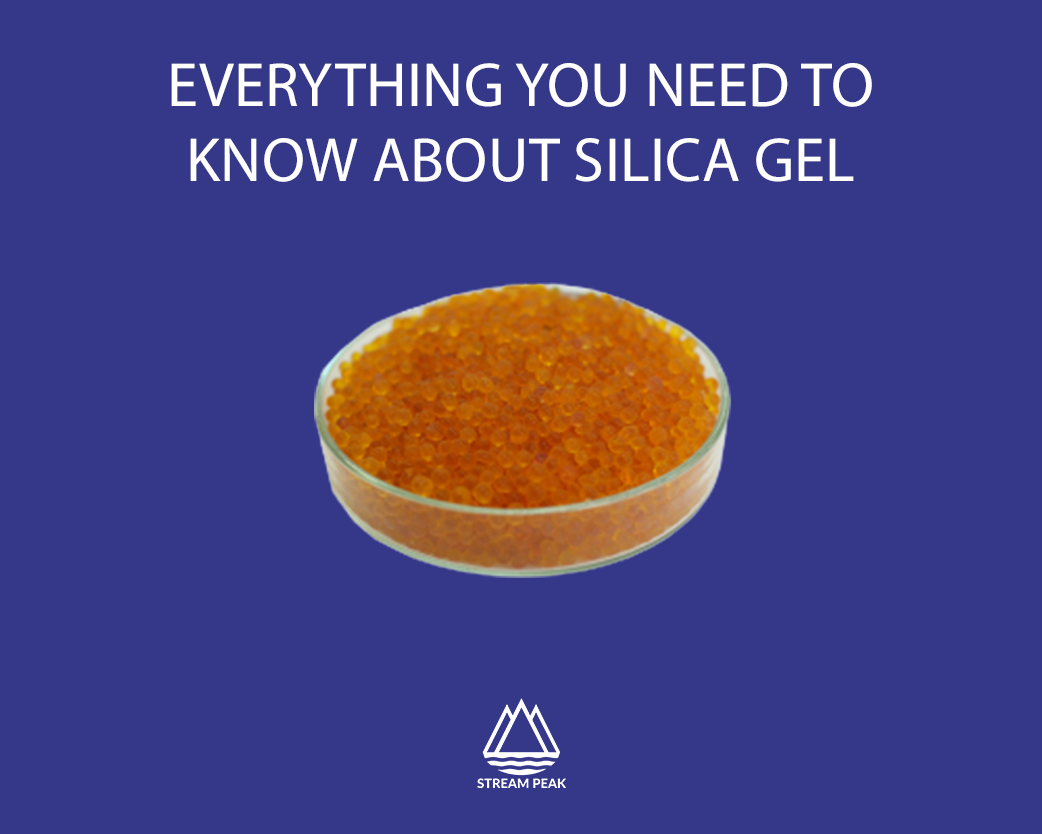
Everything You Need To Know About Silica Gel
What is Silica Gel?
Silica gel is an amorphous form of silicon dioxide made from sodium silicate. The desiccant forms tiny granules similar to beads or crystals that can absorb and retain moisture. The USDA and FDA approved the moisture absorber for human consumption in packaged food products to extend shelf-life and reduce humidity in foods, electronics, and medicines.
The desiccant is often used in packaging bedding or photographs to protect products from humidity or condensation. It’s highly porous and can absorb up to 40% of its weight in water vapour.
Silica gel dries gases and liquids, extends shelf life, and improves product quality. They can be found inside desiccant packs or capsules with electronics and footwear to prevent excessive moisture in the packaging.
Silica gel packets are packages of desiccant material used to absorb moisture and are found in food products, electronic devices and many other consumer goods. They are classified as “non-hazardous,” meaning they are safe.
In medicine and pharmaceutical applications, silica gel helps control moisture levels when storing medication over long periods. Other commercial uses include dehumidifying tools or cameras for photography or electrical components for electronics. The desiccant packets can also be used in personal care items like vitamins, cosmetics or hair care products to prevent oxidation or limit unwanted scents from developing.
Effectively used, it’s an excellent adsorbent for packaging that requires moisture protection.
Properties of Silica Gel
Silica gel is a granular material made from silicon dioxide. It is odourless, non-toxic, and slightly hygroscopic, meaning it can absorb moisture from the air. The amount of absorption depends on the environment and potency of the silica gel packet.
The desiccant beads consist of particles suitable for storing items sensitive to moisture, such as electronics, medicines, and food. The moisture absorber does this by trapping moisture in its micropores. When exposed to air, these pores absorb water molecules until they reach equilibrium.
The efficiency of silica gel packets in capturing and storing moisture depends on their size and hardness. Larger and harder particles create a bigger surface area and higher absorption rates. The benefits of using these packets are worth their costs. They extend the shelf life of moisture-sensitive items and reduce corrosion and oxidation damage due to humidity.
Uses for silica gel packets
Silica gel packets are small, sachet-like bags, and we can often find these moisture-absorbing packets alongside products such as electronics and medicines during storage and transportation. The desiccant packets dry products in the packaging, protecting them from moisture damage. They can be used for many practical applications, such as:
- Preventing rust formation. The desiccant bags can be used in toolboxes, damp basements, or other humid areas. The packets absorb moisture from the air and prevent metallic items from rusting or corroding.
- Preserve flowers by drying them and removing excess moisture, allowing them to keep their structure.
- Used as a dehumidifier in closets or cabinets and prevent mould growth. Reuse silica gel by exposing them to high temperatures to remove moisture within the desiccant.
- Storage and preservation. Silica gel preserves moisture-sensitive items before they reach end users, preventing corrosion and extending shelf life.
- Packaging and shipping. The desiccant protects items from humidity and moisture that can cause rusting or spoiling during shipping.
- Industrial Applications. The moisture absorber keeps delicate components stable in oil or gas tanks and can be used in industrial drying operations as an adsorbent for liquids.
- Environmental Control. It controls relative humidity levels, preventing mould growth and dust particles from circulating in air ducts.
Silica gel desiccants are a packaging solution for protecting goods from moisture. These moisture absorbers are non-toxic, odourless, and non-corrosive beads or pellets that absorb moisture in stored goods. Desiccants prevent mould growth, spoilage and deterioration, rust, and corrosion in highly humid areas.
Using 1 gram of silica gel per cubic foot in airtight packaging is recommended for moisture protection. Use a humidity indicator card to allow monitoring of the humidity in the packaging and to check if replacements are required. Breathable materials like paper, cardboard and perforated plastic bags can help provide airflow and allow the desiccant beads to absorb humidity faster.
Benefits of Using Silica Gel
Silica gel is an odourless, non-toxic desiccant made from sodium silicate. When exposed to air, it hardens and forms a gel-like material; it protects the environments such as closets, drawers and packaging from moisture. It can lower relative humidity levels to less than 50% and extend the shelf life of many products.
Silica gel packets are suitable for controlling moisture and dampness. They can keep food fresher for longer by absorbing the moisture that causes spoilage. Place several packets inside food storage containers or bags to protect food from excessive water vapour and humidity exposure.
Silica gel can trap airborne particles like pet dander, smoke particles and smoke particles, which may be hazardous. Place this desiccant in areas affected by such particles to reduce their presence in the air and potential health issues.
How to Handle Silica Gel Packets
Silica gel packets contain a desiccant material, so handle them with care! Rough handling can break the packets and create dust, irritating and reducing the desiccant’s effectiveness. Here are tips to prevent that:
– Wear gloves when dealing with silica gel packets.
– Store in airtight containers or bags.
– Avoid direct sun or extreme temperatures.
– When disposing of old packets, ensure they are sealed before placing them in the trash.
– Don’t mix old and fresh packets, as this reduces effectiveness.
Potential Hazards of Silica Gel
Silica gel is a desiccant that absorbs moisture. The moisture-absorbing solution is often used to keep food products fresh. The desiccant should be stored in a cool, dry place, and businesses should have clear policies on using and disposing of silica gel packets.
Do be aware that swallowing the gel may lead to choking. Dust from packets can irritate or cause coughing. In industrial settings, workers should wear protection like gloves and masks.
Conclusion
Silica gel packets are cost-effective yet reliable for avoiding mould and moisture damage. Always handle with caution and follow manufacturer instructions. Storing them correctly and monitoring their condition is critical for a long-lasting effect. Given their low cost and multiple uses, they will remain a popular packaging solution.
Protect goods against moisture using silica gel desiccants. Watch our video here to find out more!



